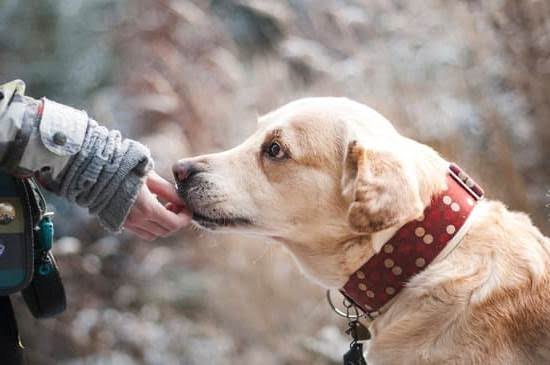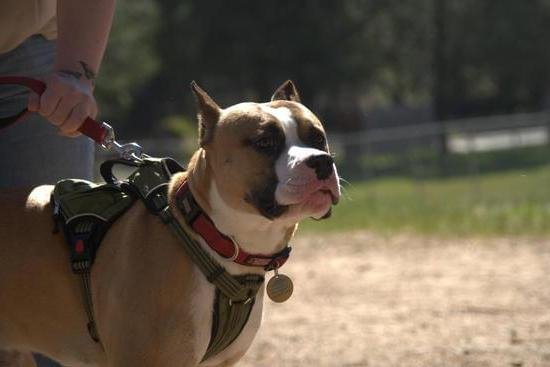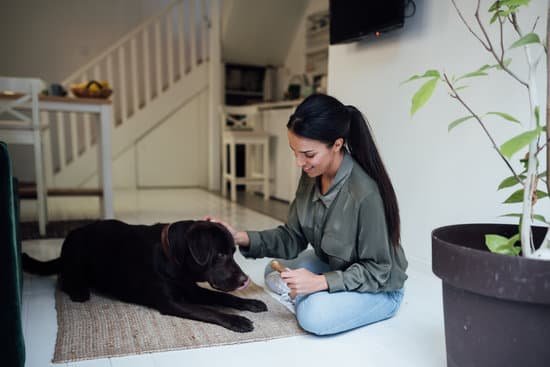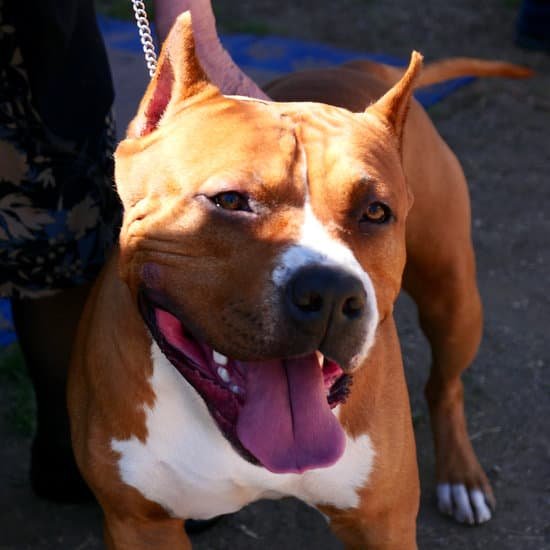Introduction
A Service Therapy Dog is a specially trained dog that has been trained to provide therapeutic help and comfort to those in need. They can help people with physical, mental, and emotional illnesses, assist with autism and teaching children with learning disabilities. People who have the company of a service therapy dog often feel less lonely and enjoy the unconditional love they receive from their four-legged friend. These animals can also learn how to perform specific tasks for those who may need extra assistance, such as opening doors, retrieving items from hard-to-reach places, providing pressure therapy (also known as deep pressure stimulation), or offering emotional support when needed. The relationship between a service therapy dog and its handler is truly special; it gives both parties the opportunity to connect in meaningful ways that form lasting bonds.
Advantages and Disadvantages of Training a Service Therapy Dog
Advantages of training a service therapy dog include having a pet that is well-trained to provide companionship and comfort. Service therapy dogs can help individuals with disabilities, those recovering from post-traumatic stress disorder, trauma patients, the elderly, and those suffering from depression or anxiety by providing comfort, aiding in stress management with presence, increasing self-esteem and feelings of belongingness. Training is important to ensure the dog is comfortable interacting with people and performing necessary tasks.
Disadvantages of training a service therapy dog include time commitment as you must dedicate time daily to training. You will also need specialized knowledge on how to best train your particular breed of dog so that they are able to properly interact with other individuals who may have disabilities or illnesses. In addition, depending on the type of service the animal is being trained for, special accommodations may be needed such as specialized medical equipment or access to certain areas that may not otherwise be available without an assistance animal permit. Finally, if you do not keep up with regular maintenance for your pet’s health and vaccinations it can increase his or her chances of contracting various diseases which can put people surrounding them at risk.
Supplies You’ll Need to Train Your Service Therapy Dog
Training your service therapy dog requires patience and dedication, and having the right supplies is essential. You’ll need treats which will be used as positive reinforcement and should always be kept handy when you’re training. A leash is also a must-have item; opt for a lightweight but strong one so you can control your pet if necessary. If your pup seems to have excess energy or needs more exercise, a toy such as a frisbee or ball will come in handy. Toys can also help keep your puppy entertained while they master obedience commands such as sit or stay. Lastly, you should invest in a pouch that attaches to your belt so your treats and leash are within reach at all times, leaving both of your hands free for other needs as you train.
Understanding How Service Therapy Dogs Learn
Training a service therapy dog to provide assistance and comfort to those who need it most is an incredibly rewarding endeavor. However, one of the key aspects to this type of training is understanding how these dogs learn. Service therapy dogs are typically trained using a reward-based system, whereby the canine receives praise or treats for displaying desirable behaviors. This method of training works best since it reinforces positive behavior and eliminates any potential nagging or reprimanding from the handler that could have a negative effect on the dog’s development. Additionally, since service therapy dogs must interact with people in order to effectively do their job, it is important that they receive plenty of socialization during their training period. Taking them around other people, animals and different environments allows them to get accustomed to various sights, sounds and smells in a safe and controlled setting. Lastly, communication is an essential aspect when training any breed of dog and should be heavily emphasized right from the start, as this will ensure all parties involved understand what is expected and required. With these tips in mind, anyone can successfully train their own service therapy dog!
Establishing Learning Methods for Different Dog Breeds
When it comes to training a service therapy dog, there are some key points to consider when determining the best approach for each type of dog. Firstly, the size and breed of the animal should be considered. Larger breeds, such as German Shepherds or Golden Retrievers, tend to respond best to positive reinforcement methods, such as reward-based training. This type of training should include plenty of verbal praise, treats, and physical affection for successfully completed tasks. Smaller breeds such as smaller Terriers or Toy Poodles may not require quite so much positive reinforcement and can instead be trained using more gentle methods such a clicker training where the handler will use a clicking sound in association with desired behavior in order to create an effective communication assistance tool between them and the dog. No matter what breed is being trained however it is important that every program be tailored specifically towards that particular animal and their unique personality traits in order to ensure success. For example, if a particular breed tends towards shyness it is important that they feel safe and secure during the learning process so that they feel comfortable enough in order to perform even the most basic tasks. Similarly, aggressive breeds might require slightly different approaches which include additional obedience classes aimed at developing better socialization skills in order to minimize any risk of aggressive behaviors while around other people or companion animals. With patience and understanding, almost any breed of dog can ultimately become a skilled service therapy animal provided owners are willing to take the time and effort required in order to provide them with proper training tailored specifically for their needs!
List of Basic Commands to Train Your Dog
Training your Service Therapy Dog requires consistent work and dedication. Before starting to train your dog, it is important to decide what commands you will use. Here is a list of basic commands that can be used to train your service therapy dog:
1) Sit – This command will make your dog sit in a sitting position on the floor. It should be used at the beginning of any activity to keep them focused and prevent jumping.
2) Down – This command will get your dog into a lying down position. It should be used when you need them to stay in one spot for an extended period.
3) Stay – This command will make sure that your service therapy dog does not move from that spot until given the release command or permission from the handler.
4) Come – This allows you to call them over from a distance or away from distractions.
5) Leave it – This allows you to instruct the dog not to interact with certain objects, such as food dropped on the ground or other animals/people that might distract them during training sessions.
6) Off-leash control – It is important for dogs providing therapy services thrive off-leash as well as on leash, so this behaviour needs to be taught and reinforced by consistently rewarding correct responses during training sessions.
7) Climb/Jump up – This can help guide the service therapy dog onto furniture or into vehicles when needed for transportation purposes or when servicing clients requiring additional assistance due to physical impediments or disabilities.
8) Fetch – Depending on levels of mobility within their clients, service therapy dogs may need instruction in fetching items desired by their client(s). The instruction should focus on retrieving items such as completed papers delivered across a room and giving back those same papers upon completion of instruction (without exceptions).
Advanced Commands and Tricks to Teach Your Dog
1. Have your dog fetch items on command: Start by having your dog bring you a toy or an item such as a sock when you ask him to by using the “fetch” command. This can help him learn to be patient, concentrate, and focus even in distracting environments.
2. Teach your dog how to respond to a “wait” command: The wait command will ensure the safety of both you and your service therapy dog. Training your dog to wait at doors, elevators, public transportation, or other areas for long periods of time can ensure that he won’t run off in a crowded area and that he is aware of his environment.
3. Help your dog learn how to start and stop on command: The start and stop commands are essential to make sure that he knows where he needs to be while interacting with others during a therapy session or activity. Instead of giving one particular cue word use multiple phrases (yes, no, start, stop). Practice these commands in different areas around the house so that he can get used to hearing them everywhere and understanding that they don’t just mean stay still but also move away initially and then come back when you call him again.
4. Teach him leash manners: Leash control is important so that he won’t pull his handler in every direction while on walks or running errands together. Try using treats as reward for corrected behavior or give verbal praise when your pup stays next to you without pulling. When out in public have him sit at sidewalks edges when tied up outside stores instead of having him lay down making it easier for people passing by not having the need for an extra obstacle.
5. Develop Sit-Stay-Come recall methods if necessary: As part of training for service therapy dogs, teaching them the “sit-stay-come” method helps keep them focused in particularly stimulating environments as well as helpful if someone else has come into contact with them who may be unfamiliar with their mannerisms or expecting them to do something they are not comfortable with yet such as petting them unexpectedly straight away etc.. The “come” portion of this exercize will enable you recall the pup even after being distracted by a passerby which can help prevent potential injuries happening due potential conflictions with unfamiliar elements etc… Training these simple cues thoroughly before attending any therapeutic assistance events will result in more positive success when aiding those truly in need ultimately!
Choosing Positive Reinforcement for Your Dog
Training a service therapy dog requires patience and consistency. Using positive reinforcement is key to helping your pet become well-behaved, obedient and reliable. Positive reinforcement works by rewarding your dog with treats, verbal praise or a special game whenever they do something correctly. This will help them learn that good behavior results in something enjoyable for them! It also reinforces the behavior so your pet is more likely to do it again in the future. Additionally, make sure to give your furry friend plenty of love and attention throughout the training process – dogs thrive on emotional connection from their humans! To ensure your service therapy dog becomes the best companion possible, stick to consistent commands and create structure for their daily life. Offer rewards for desired behaviors and gently redirect if you catch them displaying something undesirable. With enough time and commitment, you’ll watch your beloved pup transform into an exceptional service therapy animal that can positively impact many lives in need!
Identifying and Responding to Behavioral Problems During Training
Training a service therapy dog can be a rewarding experience, but it is important to recognize any potential behavioral problems during the process. It is essential that these issues are addressed and resolved as early on as possible in order to ensure the safety of both the handler and those around them.
One of the most common issues with service therapy dogs is poor obedience. A service therapy dog must be obedient when commanded or given a specific task. If a dog displays behavioral problems during training such as ignoring commands or being unresponsive, then that should be addressed as soon as possible through appropriate correction and reinforcement techniques. This may include providing rewards for desired behaviors, redirecting negative behavior with distractions, and increasing requirements for tasks that are difficult for the dog to understand or master.
Another issue which can affect a new service therapy dog is aggression and/or anxiety. Aggression should always be addressed immediately, as this could create serious harm if left unchecked. Anxiety can also create difficulties in controlling behavior and managing situations appropriately. In order to tackle these issues, owners should focus on careful management of triggers that might trigger fearful/aggressive responses; offering rewards for calm behavior in challenging environments; desensitizing their dog gradually to people who present themselves quietly; providing training games that help control fearfulness and agitation; and giving plenty of praise when good behavior is displayed.
With proper guidance, patience, and positive reinforcement, it is possible to train a successful service therapy dog who is prepared to enter any environment confidently with no fear or anxiety issues holding them back from fulfilling their duties with success.
Finalizing Training and Obtaining Service Therapy Dog Certification
Once your pup has mastered all of a service therapy dog’s roles and tasks, it’s time for finalizing training and obtaining certification. During this step, you’ll need to demonstrate that your canine companion is ready to work in public places safely and with his best behavior always on display. This can be done by having him meet elements of the public such as other service dogs, people wearing different uniforms or speaking different languages, interacting with children or adults, groups of people gathered together. The pup will also need to pass tests where he is tested on obedience behaviors such as sit-stay, down-stay and recall commands (no matter how much noise and commotion there is around him). Finally, you’ll submit paperwork for certification provided through the organizations recognizing service dogs – such as Assistance Dogs International (ADI), International Association of Assistance Dog Partners (IAADP), or The Delta Society – describing the individual pup’s roles and tasks in detail. By passing these qualifications and earning their certification of approval from an authorized third party organization, your pup will be officially cleared for active service.

Welcome to the blog! I am a professional dog trainer and have been working with dogs for many years. In this blog, I will be discussing various topics related to dog training, including tips, tricks, and advice. I hope you find this information helpful and informative. Thanks for reading!





